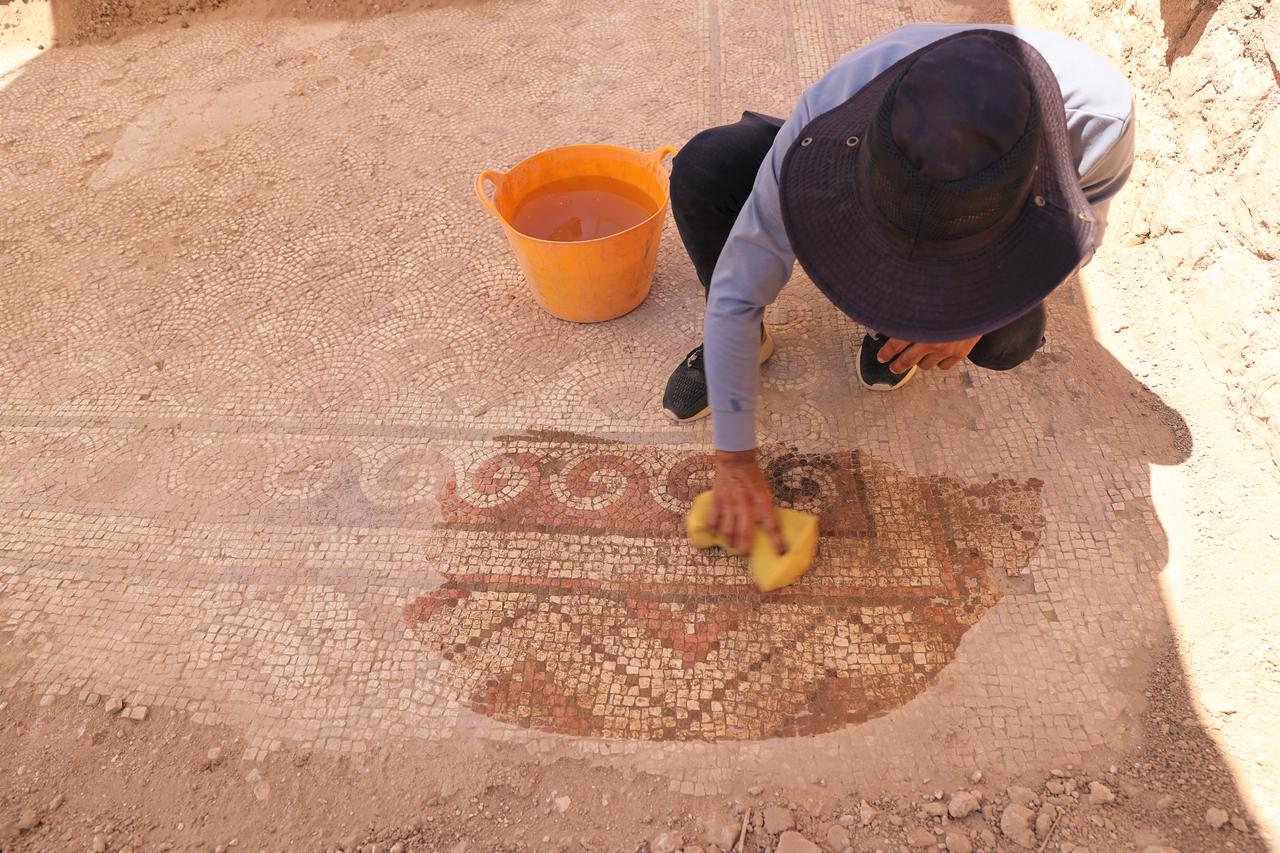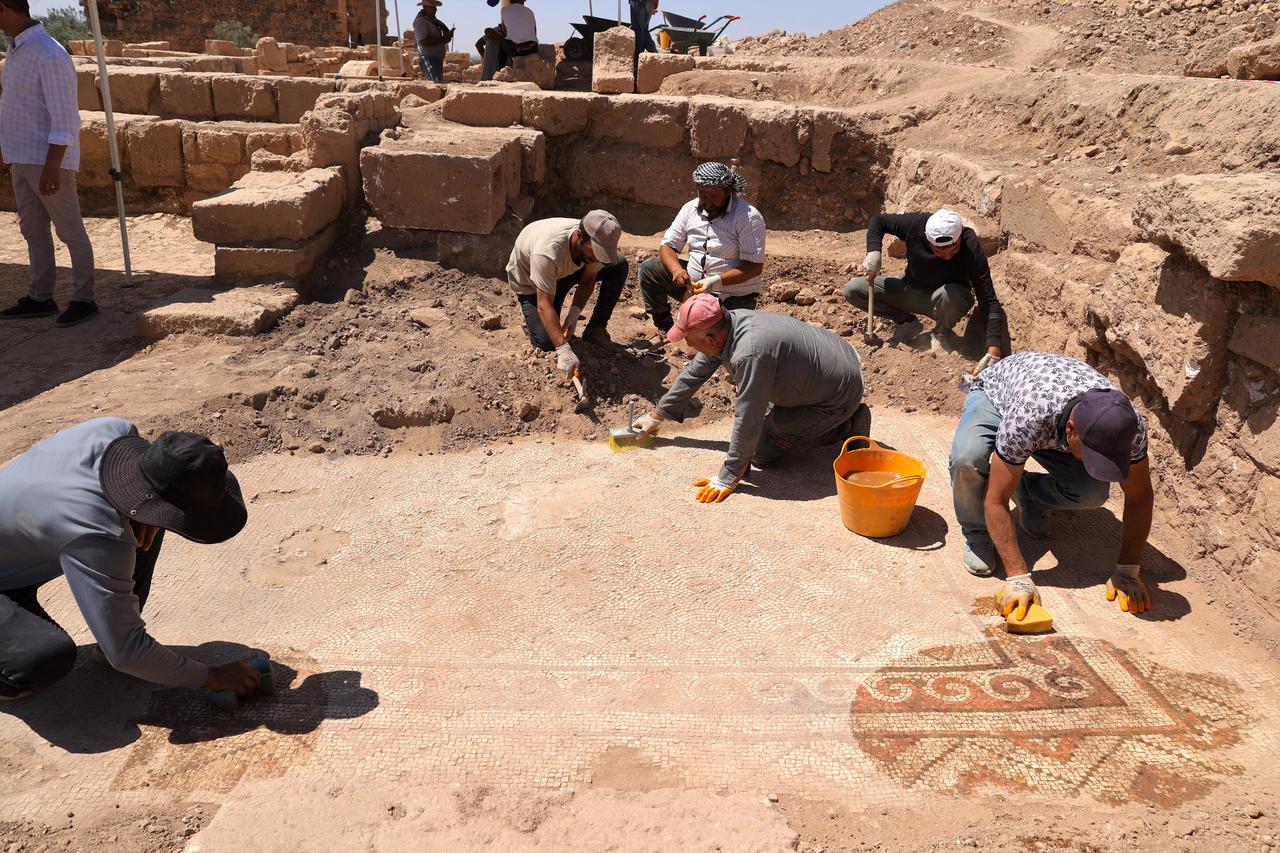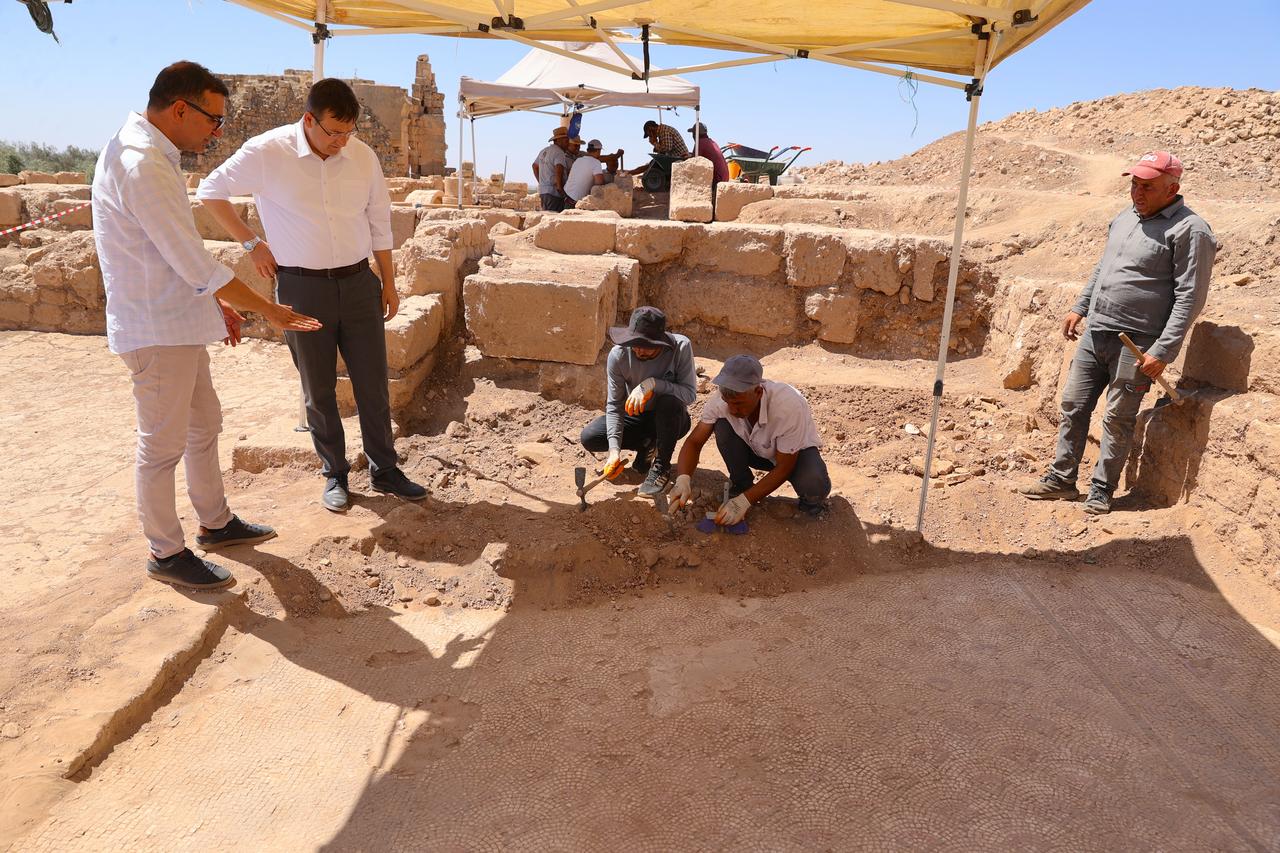
Archaeologists have uncovered a remarkably well-preserved Roman mosaic estimated to be around 1,500 years old in the ancient city of Dara, located near the city of Mardin in southeastern Türkiye. The mosaic, featuring intricate wave and drop motifs, was discovered in the agora—the central market area—of this fortified settlement originally built by the Eastern Roman (Byzantine) Empire to defend its eastern frontier against the Sasanian Empire.
Situated in Oguz, a village around 30 kilometers from Mardin’s city center, the ancient city of Dara has been under continuous excavation for nearly four decades. Excavations intensified after the site was included in Türkiye’s “Heritage for the Future Project” last year, launched by the Ministry of Culture and Tourism.
The newly discovered mosaic was located adjacent to a series of small shops and workshops unearthed in the agora. Archaeologists believe the mosaic once decorated the floor of a domestic building used in the Roman period. Measuring about 50 square meters, the mosaic appears nearly untouched and features geometric patterns, including wave and diamond motifs along its borders.
“The mosaic was found almost intact, which makes it a spectacular discovery for us,” said Ayhan Gok, Director of the Mardin Directorate of Culture and Tourism. “We believe it served as a decorative floor in a residence. It’s an extraordinary find—uncovered after remaining untouched for 1,500 years.”
Gok noted that the mosaic appears to have undergone repairs during antiquity, possibly two or three times, yet it still maintains much of its original composition. He added that the piece will eventually be presented as a single unit and become a new attraction within the ancient site.

The site director, archaeologist Dr. Devrim Hasan Mentese, explained that excavations in the agora area have been ongoing for five years and have yielded significant insights into the structure and function of the city’s ancient commercial hub. Among the finds are nearly 20 shop units, workshops, and even a Roman-era drinking water system.
Mentese said that while fragmented mosaics had been found in earlier seasons, this is one of the few to be discovered almost completely intact.
“We uncovered more than half of the piece and determined through test trenches that it forms a complete floor, likely covering a large room,” he said. A coin discovered on the site, dating back to the reign of Emperor Justinian I (circa 525–575 A.D.), confirms the estimated age of the mosaic.

Originally constructed to house Roman troops defending the empire’s eastern borders, Dara was once home to as many as 25,000 soldiers. However, the findings at the site indicate the city’s role extended beyond military functions.
Recent discoveries, including religious inscriptions and trading infrastructure, suggest that Dara also served as a major commercial and spiritual center in Mesopotamia. Mentese emphasized that the city likely attracted traders and pilgrims alike, underscoring its importance within the region during the Eastern Roman period.
Despite extreme heat, excavation teams continue to work with precision to uncover new layers of history in Dara, a site already known for its vast necropolis, water cisterns, defensive walls, and impressive urban layout.